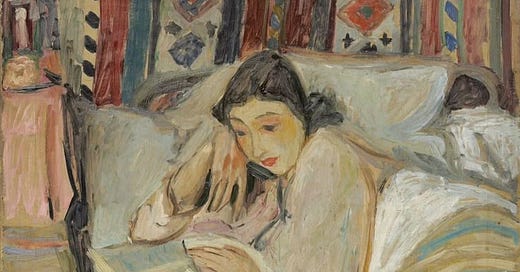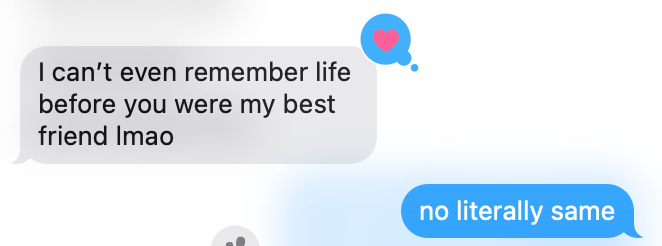intro to nonfiction reading syllabus
an introduction and three month syllabus for some interesting nonfiction books
I’ve been obsessed with making all sorts of reading schedules and syllabi this year, so I thought it would be fun to ask some of my reader friends to make one too. The first one is from Elle (not me), who runs the newsletter Breakfast for Dinner. She is a nonfiction literature connoisseur—something I am most definitely not. Most of my nonfiction reads in the last decade have come directly from her recommendation list. And now that she has a Substack up and running, I asked her to make a introductory syllabus for those wanting to get into nonfiction.
Totally unrelated to the syllabus (you can skip this part—I just got deeply sentimental listening to Landslide while writing this introduction): Since it’s Elle’s birthday on the 13th (gemini princess), I’m adding this little quote I adore from Everything I Know About Love about best friends.
“My mess only takes proper shape with that familiar and favorite piece of my life standing next to me. We know the names of all our grandparents and our childhood toys and we know the exact words that, when put in a certain order, will make each other laugh or cry or shout. There isn’t a pebble on the beach of my history that she has left unturned. She knows where to find everything in me and I know where all her stuff is too.”
To know me is to know how much I love my best friend; anyone who knows me in any capacity knows her by extension. Elle has been my level head and moral compass and reading buddy and other half for the last ten years. I find so much comfort in the fact that among all the uncertainties and changes in life, our friendship will always be my north star.
Okay. Enough of that. Here’s what you actually opened the post for: the syllabus itself.
Introduction to Modern Nonfiction Literature
(guest syllabus by
)In college, I double majored in creative writing and history. I am one of those girls who eventually made the slow crawl towards marketing (but never say never to a PhD in history)! Yet that background, as well as the things that made me love those subjects in the first place, might make me uniquely poised to recommend a beginner’s syllabus for nonfiction that sits at the intersection of imagination and information.
A sentence can soar just as much in a true work as an untrue one; a writer of nonfiction can infuse just as much creativity onto the page as their fictional counterpart. Oftentimes, I think, people are just hesitant in knowing where to start.
As you approach traditionally published nonfiction, whether for the first time or as a repeat visitor, the first thing I’ll offer is perhaps something of the obvious: not all nonfiction books will be for you. In the same way that everyone has preferences within the diversity of fiction genres, nonfiction contains just as many multitudes.
Reflecting on that context, I’m going to venture out with the second general statement I’ll offer: if you like to read, there will be nonfiction you’ll enjoy. Hell, if you’re reading this sentence on this newsletter corner of the internet, I think it is important to note that the blood coursing through Substack is tried and true as well as innovative nonfiction.
There are a thousand and one ways I could write a nonfiction starter syllabus. I could go for something centered on the writing styles of the ladies of the 70s (think the best work of Didion, Eve Babitz, Patti Smith, and Susan Sontag) or the best works of true crime fiction (Midnight in the Garden of Good and Evil as well as In Cold Blood as the front runners, of course). Then there are the ways I could ask you to reflect further, deeper, on what it is to live in this world right now through some stellar memoirs by black women (Becoming and Hunger and The Yellow House) or books from scientists that seek to confront our changing climate (starting from The Sixth Extinction and The Uninhabitable Earth). But I’m losing the thread.
Instead of nursing my own interests (much), I’ve chosen to tackle this syllabus by breaking the months into broad categories, with weeks themed around them. As you adapt this to you and your own interests, chuck away a week that doesn’t speak to you or double down on one that does. The wonderful thing about a syllabus, whether from a class, or one of the lovely ones Elle has already written, or one you set for yourself, is that they are designed to spark interest, reflection, and conversation.
The categories I have chosen here are geared towards the reader just diving into nonfiction, working from least to most challenging. Memoirs, I believe, are a natural starting point for those more attuned to fictional writings because of their storytelling aspects and the common use of first-person narration. Month two delves into all things niche nonfiction; every book is in a completely different style, on a completely different subject. Finally, the wider world offers a somewhat challenging uptick, but one that may succeed in just barely scratching the surface as you begin accessing the stories of others on a historic and worldwide scale.





